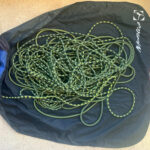Igneous rock, born from the fiery depths of the Earth, offers incredible potential for transforming your landscape. At rockscapes.net, we help you explore the different types of igneous stone, understanding their unique properties and how they can be used in Arizona landscapes, bringing a touch of geological artistry to your outdoor spaces. Delve into this guide to uncover the power of igneous materials, landscape design, and volcanic rock.
1. What Exactly Is Igneous Rock?
Igneous rock is a type of rock formed through the cooling and solidification of magma or lava. Magma is molten rock found beneath the Earth’s surface, while lava is magma that has erupted onto the surface.
Igneous rocks, as defined by the U.S. Geological Survey (USGS), are fundamental components of our planet’s crust. These rocks originate from the cooling and solidification of magma (underground molten rock) or lava (magma that reaches the surface). This cooling process can occur either deep within the Earth (resulting in intrusive igneous rocks) or on the Earth’s surface (resulting in extrusive igneous rocks).
1.1. Intrusive Igneous Rocks: Forged in the Earth’s Depths
Intrusive igneous rocks, also known as plutonic rocks, are formed when magma cools slowly beneath the Earth’s surface. This slow cooling process allows for the formation of large, visible crystals, resulting in a coarse-grained texture.
According to Arizona State University’s School of Earth and Space Exploration, the slow cooling of magma allows for the development of large crystals. Granite, diorite, and gabbro are common examples. These rocks are often used in countertops, monuments, and building materials.
Here are some examples of intrusive igneous rocks:
- Granite: A light-colored rock with visible grains of quartz, feldspar, and mica. It’s often used for countertops and building facades.
- Diorite: A medium- to dark-colored rock composed mainly of plagioclase feldspar and hornblende.
- Gabbro: A dark-colored, coarse-grained rock that is chemically equivalent to basalt.
- Peridotite: An ultra-mafic rock composed mostly of olivine and pyroxene, typically found in the Earth’s mantle.
